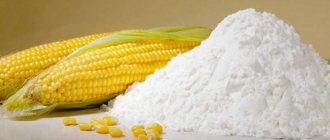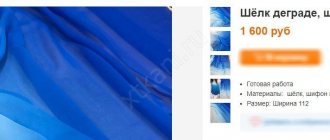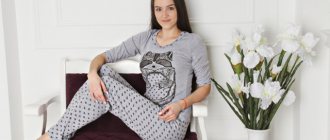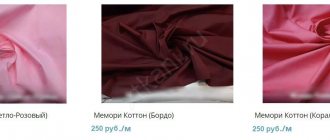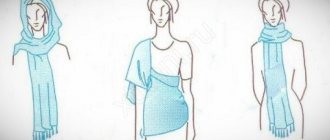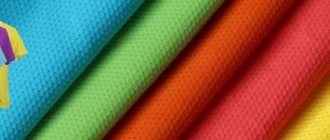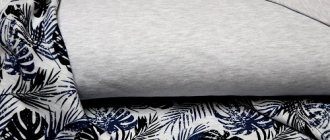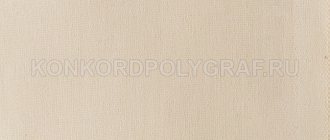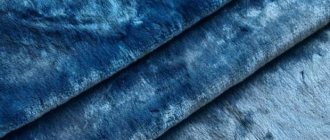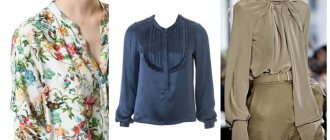- home
- Features of Duspo fabric
Duspo is a lightweight synthetic raincoat and jacket fabric, 100% polyester.
Translated from English, dewspo is a word consisting of two: dews (dew) and po (part of the word “polymer”). The name contains the key advantage of the material: thanks to polymer impregnation, it has excellent water-repellent and windproof properties. Another name that can be found is “poly ponge”; in everyday life it can also be referred to as “dyuspa”.
What are the main features of the duspo?
Dewspo is made by plain weaving polyamide warp and weft threads. The result is a lightweight but dense fabric that is very wear-resistant. Its density varies from 85 to 240 tex, that is, exactly the number of weft and warp threads woven into 1 square inch.
The material can be plain-dyed (made from already dyed threads), or with a print - in the latter case, the design is transferred to the finished white or colored plain fabric.
The main manufacturers of cushion fabric are China and South Korea (up to 98% of all products). Modern production and control make it possible to obtain and supply goods of exemplary quality to the Russian market.
Production
It is produced by the spunbond method from a polymer melt (usually polypropylene powder or granules) without the help of weaving machines.
- Streams of liquid polypropylene pass through a spinneret spinning machine, at the exit (from thin holes - spinnerets) from which threads or fibers are obtained. They are immediately placed on a conveyor to form a web.
- The fabric can be formed in different ways - by needle piercing, chemical impregnation or thermal bonding (hot air) on a machine with two rotating shafts through which the fiber is passed.
- Next, the material is impregnated with special compounds (optional).
- Available in different densities and thicknesses (the higher the density, the thicker), in rolls of different widths.
- It can be produced in various colors (dyes are added to the polymer melt), and the design can also be applied to the finished canvas.
What are the types of material?
There are a huge variety of this fabric on the market. They are classified according to density, impregnation composition and some other characteristics.
And, of course, they can all have different surface textures - matte, glossy, velvety, pearlescent and others. The most widely used types are:
WR (water resistance) is a well-known water-repellent impregnation. It is applied to the front surface of the fabric and provides its property in which drops of water, falling on a jacket or tracksuit, instantly roll down. Marking using the abbreviation WR (often in combination with PU) means that, of all the cushions, this material has increased moisture resistance.
PU is also a ubiquitous impregnation - polyurethane. A transparent composition is applied to the inner surface of the material. In addition to water resistance, it gains additional properties - high resistance to fat, sweat and organic solvents.
Milky (milky - “milk”) is a material that is impregnated with a water-repellent layer on the back, front or both sides. Duspo Milky is a smooth, bright, slightly shiny, milky white fabric. The color does not fade in the sun for a long time, the colors do not lose their intensity even after washing. In addition, milky is an excellent barrier to down filling and is widely used in down jackets.
Bonding (bonding - “gluing”, “fastening”) is the densest (160 g/m2) type of cushion. This material has two layers, the inner layer is made of knitwear or fleece, the outer layer is a water-repellent raincoat using PU impregnation. In terms of protection from moisture and cold, it is superior to many natural fabrics.
Peach skin, translated from English as “peach skin”. And this is no coincidence, since during manufacturing the material naps and acquires a characteristic velvety texture that is pleasant to the touch. This type of cushion is often used to create premium clothing.
Ray is a “lightweight” version of the cushion (density only 85 g/m2). It has a special impregnation, thanks to which the lightweight material receives additional rigidity. The surface of this fabric has a special pearlescent luster. Rey-dyuspo is often used for sewing outerwear for women and winter children's clothing.
Spunbond application
All the unique properties of this material allow it to be used in many areas - from construction to medicine.
Agriculture
Spunbond is the most popular covering material; it is produced under different brands - Lutrasil, Agrotex, Agrolux, etc.
They may differ in density and color, and types of additional processing. Is used for:
- protecting plants from frost, precipitation, weeds;
- promotes faster soil warming and sprouting;
- also allows you to increase the time between waterings.
In gardening and vegetable gardening, thermally bonded spunbond with a density of 15 to 80 g/m2 is usually used.
On a note
Agrofibre with SUF can be white or black. Black spunbond non-woven material is used for mulching - covering the soil to regulate temperature and humidity, and getting rid of weeds. White - for protection from frost and heat.
Advantages of spunbond as a covering material for greenhouses, greenhouses and beds:
- Light weight does not in any way interfere with the growth of even the thinnest and weakest shoots.
- Air and light permeability (indicator depends on density) or impermeability. Depending on the needs, various materials are used.
- Allows you to create a special microclimate, protect the soil from drying out and increase the periods between watering.
- Thermal insulation properties allow you to extend the growing season and protect against frost.
- Protects against insect pests.
- Doesn't rot.
- Does not react with pesticides and other chemicals.
- Does not emit toxins and does not harm the future harvest.
- It allows water to pass through and does not allow precipitation to accumulate on the surface and put pressure on plants (unlike polyethylene).
- Protects the soil from erosion (blown away by the wind).
- Softness and plasticity make it possible to cover frames (greenhouses) of various shapes and designs with this material.
Special types of spunbond are produced for the agricultural sector:
- foil black and white (to reflect light);
- two-color - black and white, red and white (to accumulate heat), black and yellow (to repel insects).
Construction
In the construction of houses, spunbond is used as an insulating layer - on its basis, vapor-permeable moisture and windproof or vapor barrier membranes (from dense materials) are made. An intermediate layer between the wall surface and the finish is made from a thin and less dense material to prevent cracking.
In road construction (and in landscape design) it is used as a cushioning layer for drainage.
Read about: Hollophan insulation
Medicine and workwear
The low cost of spunbond allows it to be used for the production of disposable products, for example, gowns, shoe covers, headgear (caps), masks, disposable kits for surgical operating departments. This material can be sterilized (radiation, steam, autoclaving), repels water and dirt, and allows air to pass through well, creating comfortable working conditions. Products made from a special laminated two-layer spunbond have blood-repellent properties.
Spunbond fabric is indispensable for sewing workwear for the service sector and catering. It is used to make aprons, trousers, and robes for beauty salons, canteens, and restaurants.
In ordinary clothing, it plays the role of a cushioning material, making clothing parts more rigid and allowing them to retain their shape without stretching.
Used as a lining material in the manufacture of leather bags, purses, purses and sports bags.
Production of hygiene products
The hypoallergenicity, softness and good permeability of spunbond make it indispensable in the production of feminine and children's hygiene products (pads and diapers) as a top layer.
Spunbond for furniture
Lightweight and inexpensive material is used as a separator between upholstery and filler, as a cushioning material over a spring block. They also cover the back walls and bottom of furniture.
Promotional Products
Various souvenir bags, cases, and cases are also made from this material.
They are more durable and environmentally friendly compared to polyethylene, and also look more presentable. Available in various densities and colors, a pattern or company logo can be applied.
Filters
Various filters are made from spunbond - for chemicals, air filters for cars, for respiratory protection (respirators), for vacuum cleaners.
Spunbond packaging and storage systems
It is used to make packaging, cases and organizers for storing clothes, linen and various household items, which protect products from dust and are well ventilated.
Nowadays, whole sets of beautiful colors are being produced that will help organize order in the house and give the interior a stylish and cozy look - these are covers for dresses and men's suits, shoes, bedding and cosmetics, made in the same color scheme.
Top products according to customers
Punching is a material with fine perforation. It is often used when sewing clothes with decorative inserts in areas of heavy sweating, providing “breathing” of the skin, and is characterized by increased rigidity.
Cire - thanks to impregnation, the canvas acquires a spectacular gloss and shine. This fabric is widely used for sewing children's jackets.
Jacquard (jaqard) - this type of fabric has a characteristic relief texture that is easy to feel with your hands. The material is used not only for sewing jackets, but also hats, as well as in the manufacture of baby carriers and covers for baby strollers.
PRT is a printed fabric with various designs and patterns. It is most widely used for making children's clothing. Often acts as a companion fabric in combination with a plain fabric of the same texture, density and finish.
Processing the cushion is relatively easy, but since the fabric is sliding, the necessary skills and special machine settings are required. Among the advantages of processing is the absence of the need for an overlocker: the edges of the fabric do not crumble due to impregnation.
Main advantages of the fabric
Compared to many other synthetic fabrics, duspo, due to its polymer impregnation, has several important advantages.
- Moisture protection. The fabric has water-repellent properties, due to which drops of water falling on the surface simply roll down without penetrating into the structure of the material.
- The canvas is practically windproof - it perfectly protects from the wind.
- With the two properties listed above, dewspo is a breathable fabric. It provides good air exchange and does not create a “greenhouse effect” when used.
- The material does not deform on bends, does not fade under the influence of ultraviolet radiation, tolerates temperature changes well, is wear-resistant and durable.
- The fabric is well suited for making clothes with a complex cut.
- Outerwear made from dewspo is soft and light, jackets made from it look stylish and elegant.
- The material is easy to care for - regular washing powder is enough for washing.
- Finally, the cost of this synthetic fabric is quite affordable, which also sets it apart from many other materials.
Where is deuspo used?
Thanks to its characteristics, the fabric can successfully compete with, and in some ways even surpass, some natural materials. It is almost universal in use. Dyuspo perfectly protects from rain, snow and wind, while providing the necessary air exchange for the skin, keeping it dry and warm.
The fabric is widely used for sewing demi-season and winter men's, women's, children's, and sportswear. These are all kinds of raincoats, jackets, overalls, vests, hats, mittens, down jackets, work clothes and much more. The optimal temperature range for use is from +5 to -15 degrees.
In addition, the material is used to make a wide variety of items, including:
- covers and upholstery for frameless upholstered furniture;
- bean bags;
- baby strollers and baby carriers;
- children's winter envelopes;
- backpacks, bags;
- soft elements of the sled;
- cushioning layer in tents.
The material is also used for sewing walking clothes for pets.
How to care for fabric?
The fabric is easy to care for, however, like any other, it requires compliance with a number of rules. It is important to know that if the material is handled incorrectly, the impregnation can lose its properties, and it is precisely this that provides the key characteristics of this raincoat fabric.
- If the dirt on the surface is small, the stain can be removed with warm soapy water.
- These clothes can be washed either by hand or in a washing machine at a temperature not exceeding +40 °C.
- If this raincoat fabric is made of fleece, then in order to avoid delamination of the fabric when machine washing, it is recommended to select a delicate washing mode.
- Drying and spinning this fabric in a washing machine is not recommended. It’s better not to wring out the fabric at all; it dries very quickly on its own. It is best to dry clothes on hangers, in a straightened state.
- Dewspo can be ironed at temperatures above 150 °C, since the material is quite fusible.
Features of care largely depend not only on the impregnation, but also on the lining fabric, so it is best to first familiarize yourself with the information that the manufacturer provides on the label or label.
Attention. It is not recommended to use bleaches, conditioners and chlorine-containing detergents for washing - they have a detrimental effect on the structure of the fabric. Dry cleaning is also prohibited.
Rules of care
Caring for products made from duspo is to preserve the quality of the impregnation with which the material is processed. Therefore, first of all, you should read the manufacturer’s recommendations on the label.
Typically, such products can be washed by hand or in a machine at water temperatures up to 40°C. After washing, do not twist the clothes too much or wring them out in the machine drum. It is better to let the water drain naturally or blot the item with a cotton towel.
When washing, do not use substances containing chlorine. Dry cleaning is not permitted.
Clothes made from soft, comfortable dyuspo fabric will not only reliably protect you from wind and rain, but will also allow you to look smart and elegant in any bad weather.

